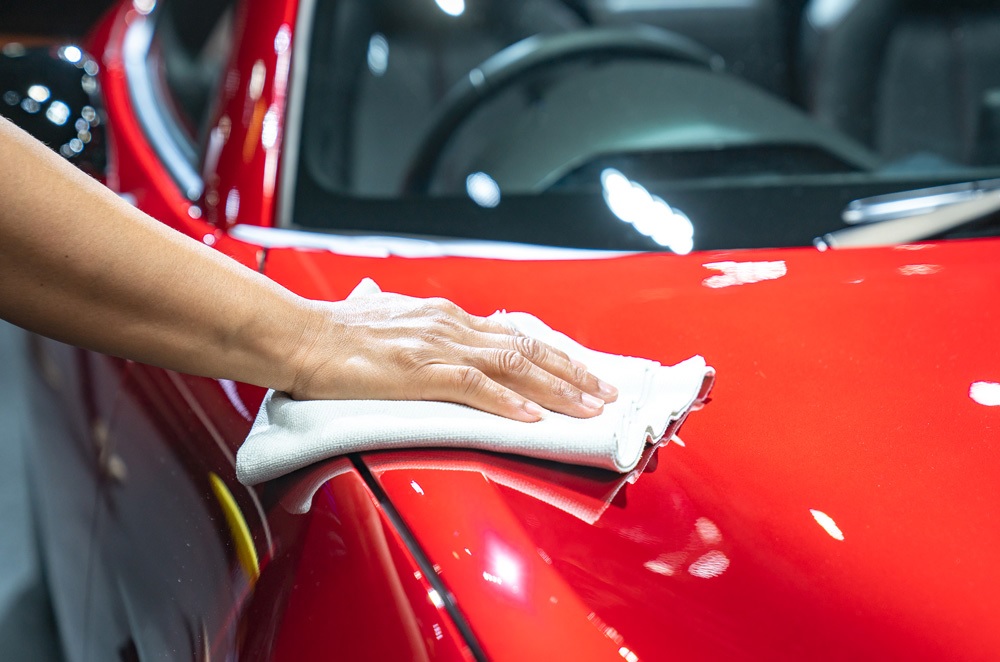In the dynamic realm of automotive care, where meticulous attention to detail reigns supreme, one question often emerges, echoing through car care forums and detailing discussions: “Is rubbing alcohol bad for car paint?” This inquiry opens the door to a nuanced exploration of the potential impact of rubbing alcohol on your vehicle’s exterior finish. Join us on a detailed journey, uncovering the truths, myths, and best practices to safeguard the luster of your cherished automobile.
Understanding the Basics: Unveiling the Properties of Rubbing Alcohol
To unravel the mystery, let’s begin with the basics. Rubbing alcohol, or isopropyl alcohol, is a solvent celebrated for its formidable cleaning prowess. Widely recognized for its ability to eliminate contaminants, grime, and adhesive residues, it stands as a reliable ally in the battle against impurities. However, its compatibility with the delicate canvas of car paint requires a discerning eye and careful consideration.
The Potential Impact on Car Paint: Peeling Back the Layers
1. Contaminant Removal vs. Protective Layers:
Rubbing alcohol is a potent adversary against stubborn contaminants like bird droppings or tree sap. However, a word of caution is in order. While effective, its robust nature may strip away the protective wax layer, leaving the paint susceptible to environmental elements.
2. The Solvent Effect:
Prolonged exposure to rubbing alcohol introduces the risk of paint degradation. The solvent properties of alcohol can gradually break down the polymers in the paint, potentially compromising its longevity and gloss.
3. Clear Coat Vulnerability:
Even the resilient clear coat, designed to shield the paint beneath, is not impervious to the effects of rubbing alcohol. Overzealous use may compromise this crucial protective layer, diminishing its ability to safeguard the underlying paint.
Best Practices for Using Rubbing Alcohol on Car Paint: Navigating the Dos and Don’ts
4. Dilution as a Safeguard:
Dilution emerges as a crucial strategy. Opt for a diluted rubbing alcohol solution, reducing its potency and rendering it gentler on your car’s delicate paintwork.
5. The Imperative of Spot Testing:
Before embarking on widespread application, conduct a meticulous spot test in an inconspicuous area. This simple step ensures compatibility and serves as a preemptive strike against unintended damage.
6. Swift Removal Etiquette:
For spot cleaning endeavors, the importance of swift removal cannot be overstated. Allowing rubbing alcohol to linger on the paint for an extended period may lead to adverse consequences.
Alternatives to Rubbing Alcohol: Navigating the Landscape of Car-Friendly Cleaners
7. Embracing Gentle Cleaning Agents:
Explore alternatives such as dedicated car wash soaps or detailing sprays specifically designed to cleanse without compromising the integrity of the paint.
8. The Gentle Touch of the Clay Bar Method:
The clay bar method, a tried-and-true technique, offers an effective means of removing contaminants without resorting to harsh chemicals, leaving the paint surface undisturbed.
9. pH-Balanced Cleaners for Precision:
pH-balanced cleaners, tailor-made for automotive surfaces, provide an effective yet gentle cleaning process that aligns with the needs of your car’s paint. (See Also: Will Vinegar Damage Car Interior? Expert Tips for Safe Cleaning)
Preserving Your Car’s Finish: Elevating Your Car Care Arsenal
10. The Ritual of Regular Waxing:
Waxing transcends mere aesthetics. Regular application creates a protective barrier, fortifying the paint against potential damage from rubbing alcohol and other contaminants.
11. Professional Detailing: A Symphony of Care:
Periodic professional detailing is more than a routine cleaning. It involves specialized techniques and products, ensuring your car receives the meticulous care it deserves.
12. The Advanced Guard of Protective Coatings:
Consider the application of advanced protective coatings, such as ceramic coatings. These coatings introduce an additional layer of defense against environmental contaminants and harmful UV rays.
Expert Tips: Safeguarding Your Car Paint from Rubbing Alcohol
Maintaining the showroom gleam of your car’s paint isn’t just about regular washes; it’s about employing the right techniques, especially when it comes to substances like rubbing alcohol. To empower you in this journey, here are some expert tips that go beyond the basics, providing a nuanced understanding of how to keep your car’s exterior looking flawless.
1. Dilution Wisdom: The Power of Balance
Before reaching for that bottle of rubbing alcohol, consider diluting it with water. This not only reduces its potency but also ensures a safer interaction with your car’s delicate paint. A mixture that strikes the right balance maintains cleaning efficacy while minimizing the risk of damage.
2. Strategic Spot Testing: A Pioneering Step
Every car is unique, and the same applies to its paint. Before embarking on a full-scale cleaning mission, conduct a strategic spot test in an inconspicuous area. This preliminary step helps you gauge the compatibility of rubbing alcohol with your car’s paint, preventing unintended consequences.
3. Swift Action Protocol: Timing is Everything
When using rubbing alcohol for spot cleaning, time is of the essence. Swift removal is paramount to prevent prolonged contact with the paint. The quicker you act, the lower the risk of adverse effects, ensuring your car’s luster remains untouched.
4. Alternative Cleaning Arsenal: Broaden Your Options
While rubbing alcohol can be effective, don’t limit yourself. Explore alternative cleaning agents explicitly formulated for cars, such as dedicated car wash soaps or detailing sprays. These alternatives provide a cleansing solution without compromising the integrity of your paint.
5. Embrace the Clay Bar Method: Gentle Efficacy
For a meticulous approach to contaminant removal without resorting to harsh chemicals, embrace the clay bar method. This gentle yet effective technique ensures your paint surface remains undisturbed while achieving a level of cleanliness that goes beyond the surface.
6. pH-Balanced Cleaners Matter: Precision in Cleaning
Not all cleaners are created equal. Opt for pH-balanced cleaners designed specifically for automotive surfaces. These cleaners provide a precise and effective cleaning process, aligning with the specific needs of your car’s paint without introducing unnecessary risks.
7. Regular Waxing Ritual: A Shield of Protection
Waxing isn’t just a cosmetic choice; it’s a protective measure. Regular waxing creates a shield, fortifying your paint against potential damage from rubbing alcohol and environmental contaminants. It’s an investment in both aesthetics and longevity. (See Also: Can You Use Tire Shine On Plastic Trim? Tips for Safe and Effective Trim Restoration)
8. Professional Detailing Excellence: Expert Care
Periodic professional detailing goes beyond what typical home cleaning can achieve. The specialized techniques and products employed by professionals ensure meticulous care, addressing specific needs and preserving your car’s paint in optimal condition.
9. Consider Protective Coatings: Advanced Defense
Explore advanced protective coatings like ceramic coatings. These coatings provide an extra layer of defense against environmental contaminants, UV rays, and even the effects of rubbing alcohol. They serve as a proactive measure to safeguard your paint for the long haul.
Incorporating these expert tips into your car care routine isn’t just about maintenance; it’s a commitment to the longevity and brilliance of your vehicle’s exterior. By understanding the intricacies of these techniques, you empower yourself to navigate the world of car care with confidence, ensuring your prized possession continues to turn heads on the road.
FAQs: Navigating the Rubbing Alcohol Conundrum in Car Paint Care
When it comes to caring for your car’s paint, questions abound, especially concerning the use of rubbing alcohol. Let’s delve into some frequently asked questions to demystify the nuances of this common concern and provide you with clear, expert-backed answers.
Q1: Is rubbing alcohol safe for my car’s paint?
A: While rubbing alcohol can effectively remove contaminants, its potency poses potential risks. Diluting it with water and conducting spot tests are recommended precautions.
Q2: Can rubbing alcohol damage the clear coat?
A: Yes, prolonged exposure to rubbing alcohol can compromise the clear coat, diminishing its protective capabilities. Swift removal and careful application are crucial.
Q3: How often can I use rubbing alcohol on my car’s paint?
A: Limit the use of rubbing alcohol to spot cleaning, and avoid frequent applications. Overuse may strip away the protective wax layer, leaving the paint vulnerable.
Q4: Are there alternatives to rubbing alcohol for cleaning my car’s paint?
A: Absolutely. Explore alternatives like dedicated car wash soaps, detailing sprays, or the gentle clay bar method for effective cleaning without the potential risks.
Q5: Is it necessary to dilute rubbing alcohol before using it on my car?
A: Dilution is advisable. Mix rubbing alcohol with water to reduce its potency, making it safer for your car’s paint while maintaining its cleaning effectiveness.
Q6: Can I use rubbing alcohol on my car’s interior surfaces?
A: Yes, rubbing alcohol can be used on interior surfaces, but be cautious with delicate materials. Always test in an inconspicuous area first. (See Also: Will Simple Green Damage Car Paint? Unveiling the Truth About Simple Green and Your Vehicle’s Finish)
Q7: Does regular waxing help protect against rubbing alcohol damage?
A: Indeed. Regular waxing creates a protective barrier, shielding your car’s paint from potential damage caused by rubbing alcohol and environmental contaminants.
Q8: What role do pH-balanced cleaners play in car paint care?
A: pH-balanced cleaners are tailored for automotive surfaces, providing effective yet gentle cleaning. They offer a precise solution that aligns with your car paint’s needs.
Q9: Can I apply protective coatings like ceramic coatings myself?
A: While possible, professional application is recommended for optimal results. Professional detailing ensures thorough coverage and longevity of the protective coating.
Q10: How can I tell if rubbing alcohol is damaging my car’s paint?
A: Look for signs such as dullness, discoloration, or changes in texture. If in doubt, consult a professional for a thorough assessment and potential corrective measures.
Navigating the world of car paint care requires knowledge and precision. These FAQs provide valuable insights to help you maintain your car’s exterior brilliance while avoiding common pitfalls associated with the use of rubbing alcohol.
Conclusion: A Symphony of Care for Your Cherished Vehicle
In conclusion, the question of whether rubbing alcohol is bad for car paint is multifaceted. While its efficacy in combating contaminants is undeniable, a judicious and informed approach is paramount. By exploring alternative cleaning methods, adopting preventive measures, and embracing the intricacies of automotive care, you empower yourself to be a custodian of your car’s pristine exterior.
A well-maintained vehicle not only captivates with its aesthetic allure but also stands as a testament to your commitment to its longevity. So, the next time you reach for rubbing alcohol, do so armed with a comprehensive understanding of its potential impact and the knowledge to protect your car’s paint, ensuring it gleams with brilliance throughout its journey on the open road.



